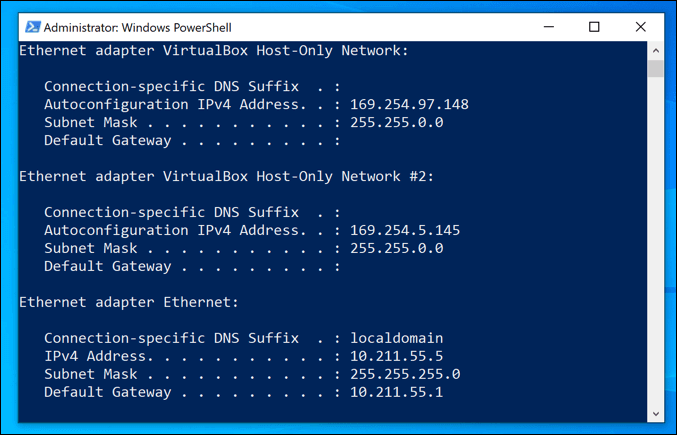


You have two options to fix remote access issues caused by frequently changing IP addresses: That can become a problem if your IP address changes regularly.

#Whast my ip Pc
However, dynamic IP addresses make remotely accessing computers, equipment or web resources more difficult.įor instance, to connect to your PC or Webcam remotely, you need to know your IP address. In practice, having a dynamic IP address doesn’t change the way you use the internet. As opposed to having each customer always using the same static IP address. They can be frequently re-used and re-assigned to devices connecting to the internet. ISPs are increasingly assigning dynamic IP addresses because they cost less to maintain. Your IP address can change a few times a year, or several times a month. Dynamic public IP addressesĭynamic IP addresses are assigned by Dynamic Host Configuration Protocol (DHCP) servers and change over time. This means your IP address will change over time – typically when your router reconnects to the ISP after a reboot or network outage. If you’re interested, you can use our other tool to check your DNS server.įor residential connections, most ISPs assign dynamic public IP addresses. Since the IP address never changes, it’s easier for hackers to locate the relevant DNS server.

However, static IP addresses do pose some security risks. Static IP addresses make connecting remotely to your computer or other home equipment easier, because your IP address never changes. That’s unless you switch ISP, or you relocate. Static public IP addressesĪ static public IP address means that your IP address will always remain the same. When your ISP assigns you a public IP address, you’ll either get a static or a dynamic address. In other words, to place your device in a approximate physical location in the world (also known as geolocation). The secondary purpose of an IP address is for location addressing. your cell phone) is connected to the internet through a wireless carrier, it would have a different IP address than a device connected to your home router (and through an internet service provider). In this scenario, all these devices have the same public IP Address. In a typical household, there are multiple devices connected to a single internet connection through a router (or combination of routers). In other words, IP addresses are somewhat comparable to postal addresses. Without specific IP addresses, devices wouldn’t be able to communicate with each other over the internet. The primary purpose of an IP address is to allow devices find and communicate with each other. IPv6 enables a wider range of addresses and ensures, that new devices can be connected to the world wide web.An IP (Internet Protocol) address is a unique identifier for each device on a network, such as the internet. Since the amount of addresses within the IPv4 format is limited and more and more devices worldwide are being connected to the internet and new format had to be introduced. These are generally displayed in a hexadecimal format. This newer implementation enables a wider scope for issued addresses. It consists of four segments which are divided by dots.Įxample 197.228.0.32 What is the difference between IPv4 and IPv6? IPv4 stands for Internet Protocol Version 4, which is a standard who enables a total range of 4.2 billion addresses. It is part of the internet protocol standard and is being used to transfer data between a sender and a receiver. Your IPv4 is 78.26.147.81 What is an IP address?Īn IP address is a number which identifies a device within a computer network.


 0 kommentar(er)
0 kommentar(er)
